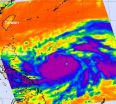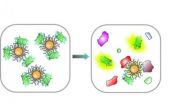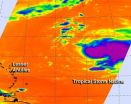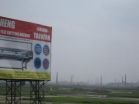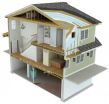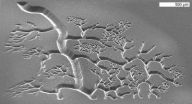(Press-News.org) Every year, nervous high school juniors and seniors, clutching #2 pencils and armed with hours of test preparation, sit down and take the SAT. At their most basic, these tests focus on verbal, math, and writing ability, and performance on these tests has been linked to subsequent academic performance. As a result, college admissions teams use SAT scores along with other information, such as high school grades, in choosing their incoming freshman classes.
It is perhaps no surprise, then, that the SAT has been the subject of much scrutiny. Some researchers have asserted that the SAT isn't a good predictor of academic performance in college once socioeconomic status (SES) – usually measured as a combination of parents' education and family income – and high school grade point average are taken into account.
And some critics have argued that the SAT is fundamentally biased against students from low-SES backgrounds, acting as a barrier that prevents them from gaining admission to college.
"This was an eye catching claim," says psychological scientist Paul Sackett of the University of Minnesota. "So we set out to obtain data to examine whether that claim really held up."
Sackett and his colleagues at the University of Minnesota examined data from 143,606 students at 110 colleges and universities and contrasted their findings with data from the University of California system that had been studied in previous research.
Their findings are reported in a new article published in Psychological Science, a journal of the Association for Psychological Science.
They found that in all the datasets, both the SAT and high school grades contributed to predicting academic performance in college. And, contrary to previous research, taking parents' education and family income into account had little effect on the relationship between SAT scores and college performance. These findings suggest that the SAT remains a useful indicator for college admissions decisions.
Moreover, Sackett and his colleagues found that the SES of students actually enrolled in college was very similar to the SES of students who were applying to college. When they examined the data more closely and looked at the entire applicant pool, they found that fewer low-SES students were entering the college admissions process.
Based on these findings, it seems that low-SES students are not underrepresented in colleges because low SAT scores prevent them from gaining admission, but rather because fewer low-SES students apply to college in the first place.
"We view this as broadly relevant," says Sackett. "Entrance tests such as the SAT receive a great deal of public scrutiny and it is important for all involved—students, parents, college officials—that accurate information about how the test functions be available."
###
For more information about this study, please contact: Paul R. Sackett at psackett@umn.edu.
The APS journal Psychological Science is the highest ranked empirical journal in psychology. For a copy of the article "The Role of Socioeconomic Status in SAT-Grade Relationships and in College Admissions Decisions" and access to other Psychological Science research findings, please contact Anna Mikulak at 202-293-9300 or amikulak@psychologicalscience.org.
END
CHICAGO --- More can be done to properly manage the care of American children with food allergies, especially when it comes to diagnostic testing and recognizing non-visual symptoms of severe allergic reactions, according to a new Northwestern Medicine study.
"Every child with a food allergy should be diagnosed by a physician, have access to life-saving medication such as an epinephrine autoinjector and receive confirmation of the disease through diagnostic testing," said lead author Ruchi Gupta, M.D., an associate professor of pediatrics at Northwestern University Feinberg ...
Toronto – Tax collectors and insurance agencies trying to boost honest reporting could improve compliance simply by asking people to sign their forms at the beginning instead of at the end.
That's because attesting to the truthfulness of the information before a form is filled out tends to activate people's moral sense, making it harder for them to fudge their numbers after, says a new paper.
"Based on our previous research we knew that an honour code is useful, but we were wondering how much the location mattered," says Nina Mazar, an assistant professor of marketing ...
Tropical Storm Sanba exploded in intensity between Sept. 12 and 13, becoming a major Category 4 Typhoon on the Saffir-Simpson Scale. NASA's Aqua satellite captured infrared data that showed a large area of powerful thunderstorms around the center of circulation, dropping heavy rain over the western North Pacific Ocean.
NASA's Aqua satellite passed over Super Typhoon Sanba on Sept. 13 at 0447 UTC (12:47 a.m. EDT). The Atmospheric Infrared Sounder (AIRS) instrument captured an infrared image of Sanba and found an eye about 20 nautical miles (23 miles/37 km) wide, surrounded ...
AMHERST, Mass. – In the fight against cancer, knowing the enemy's exact identity is crucial for diagnosis and treatment, especially in metastatic cancers, those that spread between organs and tissues. Now chemists led by Vincent Rotello at the University of Massachusetts Amherst have developed a rapid, sensitive way to detect microscopic levels of many different metastatic cell types in living tissue. Findings appear in the current issue of the journal ACS Nano.
In a pre-clinical non-small-cell lung cancer metastasis model in mice developed by Frank Jirik and colleagues ...
A new study finds that smart growth approaches to urban planning could substantially reduce the number of miles that residents drive in a year. The research was published this week in The B.E. Journal of Economic Analysis and Policy.
Smart growth focuses on the development of compact, walkable cities with houses and jobs located close together. By shortening residents' commutes, this form of urban design aims to cut transportation-related energy use and greenhouse gas emissions. California is already pursuing smart growth in order to meet emissions reductions set by the ...
Tropical Storm Nadine is struggling against wind shear and some dry air. Infrared satellite imagery from NASA showed that Nadine's most powerful thunderstorms were being pushed east of the center.
NASA's Aqua satellite passed over Tropical Storm Nadine early on Sept. 13 and saw several factors that indicated the storm was still struggling to achieve hurricane status.
Infrared data from the Atmospheric Infrared Sounder (AIRS) that flies aboard Aqua found the strongest thunderstorms with very cold cloud temperatures (colder than -63F/-52C) were being pushed east of Nadine's ...
Gardeners and landscapers may want to rethink their fall tree plantings. Warming temperatures have already made the U.S. Department of Agriculture's new cold-weather planting guidelines obsolete, according to Dr. Nir Krakauer, assistant professor of civil engineering in The City College of New York's Grove School of Engineering.
Professor Krakauer developed a new method to map cold-weather zones in the United States that takes rapidly rising temperatures into account. Analyzing recent weather data, he overhauled the Department of Agriculture's latest plant zone map released ...
Researchers have developed new software that can rapidly calculate the carbon footprints of thousands of products simultaneously, a process that up to now has been time consuming and expensive. The methodology should help companies to accurately label products, and to design ways to reduce their environmental impacts, said Christoph Meinrenken, the project's leader and associate research scientist at Columbia University's Earth Institute and Columbia Engineering. A new study, published online in the Journal of Industrial Ecology, describes the methodology.
The project ...
In a ribbon-cutting ceremony on Sept. 12, 2012, the U.S. Commerce Department's National Institute of Standards and Technology (NIST) unveiled a new laboratory designed to demonstrate that a typical-looking suburban home for a family of four can generate as much energy as it uses in a year. Following an initial year-long experiment, the facility will be used to improve test methods for energy-efficient technologies and develop cost-effective design standards for energy-efficient homes that could reduce overall energy consumption and harmful pollution, and save families money ...
Nanoengineers at the University of California, San Diego have developed a novel technology that can fabricate, in mere seconds, microscale three dimensional (3D) structures out of soft, biocompatible hydrogels. Near term, the technology could lead to better systems for growing and studying cells, including stem cells, in the laboratory. Long-term, the goal is to be able to print biological tissues for regenerative medicine. For example, in the future, doctors may repair the damage caused by heart attack by replacing it with tissue that rolled off of a printer.
Reported ...
